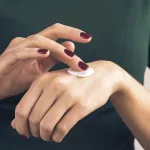Hey there, friend. If you’re scrolling through a sea of medical jargon wondering whether it’s okay to keep that trusty tube of Clobex on the bathroom shelf while you’re expecting a little one—or even nursing, you’re in the right spot. I’ll walk you through the basics, the science, and the practical tips you can actually use, all in a relaxed, coffee‑shop chat style. No fluff, no scary “you‑must‑stop‑using‑it‑today” alarm bells—just the straight‑up, balanced info you deserve.
Quick Answer Summary
Short answer: Clobex can be used during pregnancy only if a doctor says it’s truly necessary. The drug is a super‑high‑potency topical steroid, so the potential benefits must outweigh the theoretical risks.
- Very little of the medication gets into your bloodstream when applied to intact skin.
- Animal studies show possible teratogenic effects, but human data are limited and not conclusive.
Bottom line? Talk to your OB‑GYN and dermatologist, use the smallest amount for the shortest time, and keep an eye on any unusual symptoms.
Why It Matters
Imagine you’re in your second trimester, an itchy eczema flare decides to crash the party. The rash is relentless, scratching is exhausting, and you’re dreaming of relief. You reach for Clobex because it’s the only thing that’s ever calmed your skin. But then the “pregnant‑safe?” question pops up, and you start weighing the pros and cons like you’d weigh a bag of groceries. That’s exactly why this topic matters: you deserve clear, trustworthy answers that let you make a confident decision without second‑guessing every move.
How It Works
Clobex contains clobetasol propionate, a synthetic fluorinated corticosteroid that knocks down inflammation by binding to glucocorticoid receptors and shutting off the cascade of inflammatory chemicals. Think of it as a skilled traffic cop who stops the “red‑light” signals that cause itching, redness, and swelling.
Potency vs. Pregnancy Risk
Topical steroids are grouped by potency. Clobex sits at the very top—”super‑high” potency (0.05%). Higher potency means stronger relief, but it also means a slightly greater chance for the drug to be absorbed through the skin and enter the bloodstream. Below is a quick visual guide:
| Potency | Typical Systemic Absorption | Pregnancy Label (US) |
|---|---|---|
| Low (e.g., hydrocortisone 1 %) | <1 % | Not assigned (generally safe) |
| Medium (e.g., triamcinolone 0.1 %) | 1‑5 % | Not assigned |
| High (e.g., betamethasone 0.05 %) | 5‑10 % | Not assigned |
| Super‑high (Clobex) | ≈10‑12 % | Not assigned |
Even at the higher end, the amount that actually reaches your circulation is still a fraction of an oral dose, but it’s enough to keep regulators cautious.
Pregnancy Evidence
What the “caution” side says
Animal studies are the first red flag. According to Drugs.com, clobetasol showed teratogenic effects when applied to pregnant mice, rats, and rabbits. The Australian Therapeutic Goods Administration (TGA) classifies it as a Category B3 drug—meaning limited human data, but animal evidence of fetal damage.
What the “reassuring” side says
The UK’s NHS takes a more practical stance: “Clobetasol can be used during pregnancy. Because it’s applied to your skin, very little gets into your blood and almost none reaches the baby” (NHS). In real‑world practice, thousands of pregnant patients have used Clobex without reported birth defects. The key is “intact skin” and “limited area.”
Putting the pieces together
When you line up the animal data, the regulatory advisories, and the human experience, a nuanced picture appears:
- Risk is theoretical for most pregnant users because systemic absorption is low.
- Severe skin disease that jeopardizes quality of life may justify short‑term use.
- Doctor oversight is essential—especially in the first trimester when organ formation is most sensitive.
Breastfeeding Evidence
Potential milk transfer
There’s a dearth of human studies on Clobex in breast milk. Drugs.com notes that it’s “unknown if passes into breast milk.” The logic follows the same absorption principle: tiny amounts might get into the bloodstream, and an even tinier fraction could make its way into milk.
Practical guidance from the NHS
The NHS suggests minimizing exposure: apply only the needed amount, opt for a lotion or cream (easier to wash off than ointment), and wash your hands and the treated area before feeding. If you’re using it on your chest, make sure to clean the nipple area thoroughly. These steps reduce the already low risk to your nursing baby.
Bottom‑line tip
If you must use Clobex while nursing, keep the treatment area small, limit sessions to a couple of weeks, and always double‑check with your pediatrician if you notice any unusual fussiness or feeding issues in your baby.
Side Effects & Red Flags
Typical local reactions
Most people experience mild, short‑lived sensations: a brief burning, stinging, or temporary dryness. Over time, you might notice thinning skin, stretch marks, or a light‑colored halo around the application site. These are usually manageable by reducing frequency or switching to a lower‑potency steroid.
Signs of systemic absorption
Because Clobex is super‑potent, a rare but serious scenario is enough drug entering the bloodstream to cause systemic effects. Watch for these red flags and call your doctor right away:
Quick‑check checklist
Print this out, stick it on your fridge, and tick off any symptom that shows up:
| Symptom | Action |
|---|---|
| Severe skin irritation or spreading rash | Stop use, call dermatologist |
| Signs of systemic absorption (see list above) | Contact OB‑GYN and stop Clobex immediately |
| Any concern about baby’s feeding or behavior | Consult pediatrician |
Talk To Your Healthcare Team
Questions to ask
Walking into a consult armed with the right questions makes a huge difference. Try asking:
- “Are there lower‑potency steroids that could work for my flare?”
- “What’s the shortest safe treatment window for Clobex in my trimester?”
- “Do I need any monitoring—like blood pressure checks—while using it?”
- “How should I wash the area before I breast‑feed?”
Documentation you’ll need
Bring the prescription label, a list of any other topicals you’re using, and (if you have them) recent lab results. The more the doctor sees, the easier it is to calibrate a safe plan.
Sample script (feel free to copy)
“Hi Dr. Smith, I’m 26 weeks pregnant and my eczema has flared badly. I’ve used Clobex before with great results, but I’m worried about the baby. Could we discuss whether a short‑term Clobex regimen is appropriate, or if a milder steroid would be safer?”
Alternatives to Clobex
If the answer leans toward “let’s try something else,” there are several options that tend to be friendlier to pregnancy and lactation:
| Alternative | Potency | Pregnancy Data | Typical Use |
|---|---|---|---|
| Hydrocortisone 1 % cream | Low | Generally safe (Category B) | Mild eczema, dermatitis |
| Triamcinolone acetonide 0.1 % ointment | Medium | Limited data, but widely used with caution | Moderate plaque psoriasis |
| Topical calcineurin inhibitors (e.g., tacrolimus) | Non‑steroidal | Category C – discuss with doctor | Sensitive areas: face, folds |
Each alternative has its own pros and cons, so discuss them with your specialist to find the sweet spot between skin control and fetal safety.
Bottom Line
Clobex isn’t a hard “no” for pregnant or nursing people, but it’s definitely a “use with caution” situation. The drug’s super‑high potency can be a lifesaver for stubborn flares, yet the limited human data make doctors want to see a clear benefit before giving the green light. If you and your healthcare team decide it’s worth it, keep the following in mind:
- Apply the smallest amount to the smallest area.
- Limit use to two weeks unless a specialist says otherwise.
- Wash hands and the treated skin before feeding your baby.
- Monitor for any systemic side effects.
- Ask about lower‑potency or non‑steroidal alternatives when possible.
Remember, you’re not alone in this balancing act. Your doctor, dermatologist, and the countless mothers who’ve walked this path before you are all part of the same circle of care. If you have any lingering questions, or just need to vent about that stubborn rash, drop a comment below. We’re here to help you feel confident, comfortable, and—most importantly—skin‑healthy during this beautiful chapter of your life.


















Leave a Reply
You must be logged in to post a comment.